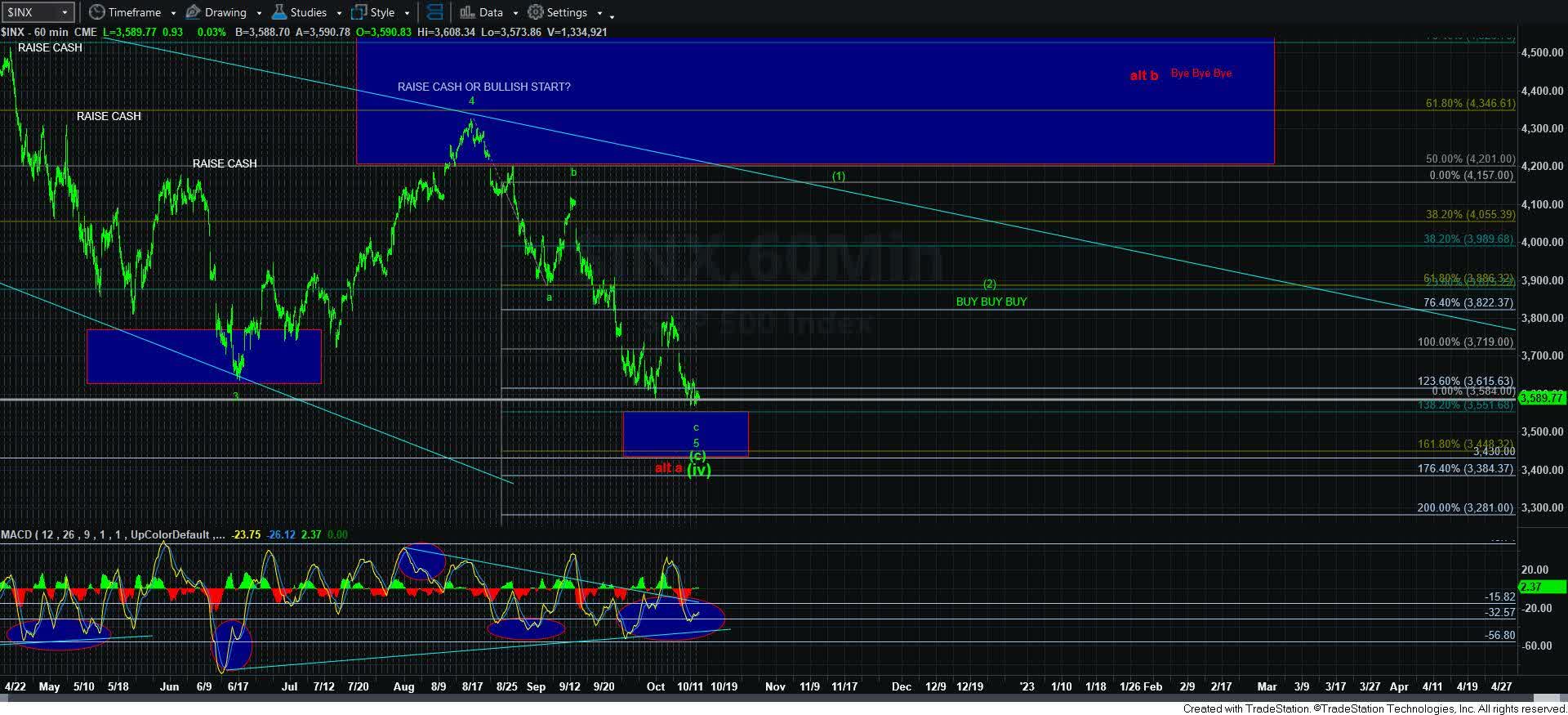Before we move into a review of the last few months of market action to learn what most investors did wrong, I think it is important to begin this missive by reposting something written by Robert Prechter in The Socionomic Theory of Finance (a book I strongly recommend to each and every investor):
"Observers' job, as they see it, is simply to identify which external events caused whatever price changes occur. When news seems to coincide sensibly with market movement, they presume a causal relationship. When news doesn't fit, they attempt to devise a cause-and-effect structure to make it fit. When they cannot even devise a plausible way to twist the news into justifying market action, they chalk up the market moves to 'psychology,' which means that, despite a plethora of news and numerous inventive ways to interpret it, their imaginations aren't prodigious enough to concoct a credible causal story.
Most of the time it is easy for observers to believe in news causality. Financial markets fluctuate constantly, and news comes out constantly, and sometimes the two elements coincide well enough to reinforce commentators' mental bias towards mechanical cause and effect. When news and the market fail to coincide, they shrug and disregard the inconsistency. Those operating under the mechanics paradigm in finance never seem to see or care that these glaring anomalies exist."
I sincerely hope you read that very carefully, as we are about to see some real-world examples of how many of you have disregarded some serious recent inconsistencies. And, the only way you will learn is to be able to recognize when and how you may have been wrong.
On October 13, the CPI report came in hotter than most expected. While most then assumed that the market would tank, the market actually bottomed that day and ended up positive by 2.6%. Moreover, it actually kicked off a 17.5% rally off that supposedly terrible report. And, clearly, this had many scratching their heads at the time, since they were operating under the common mechanical cause-and-effect paradigm as to how the market should react to the news. As one commenter on Seeking Alpha noted:
"Am I the only one wondering what the heck is going on with this market? I feel like it makes no sense anymore... Today made NO sense."
In fact, in Barron's article later that day, the author outlined the common feeling in the market that day:
"It was a massive rally, and one that came out of nowhere. And it's left market observers like yours truly wondering what the heck just happened. There wasn't any new data, no headline-making speeches, no event that occurred just after the open to spur such a move. It literally came out of nowhere-and left us grasping for possible reasons. 'Today's market reversal was a head-scratcher,' writes Oanda's Edward Moya. And he's not wrong."
But, if you were not looking at the market through the common mechanical cause-and-effect paradigm, you were likely expecting a major bottoming. In fact, this is what I wrote to our members of ElliottWaveTrader just the afternoon before the CPI was published and we began that rally:
"Thus far, the market has made several attempts at hitting the blue box support region on the 60-minute SPX chart. And, each time, divergences continue to grow. And, if you look at the 5-minute SPX chart, there is still opportunity to actually strike that support below as long as we remain below the smaller degree resistance noted. . . But, I think we will likely be much higher than where we stand today as we look out towards the end of October, or even into early November, depending on how long it takes the market to bottom out, and how fast the rally I expect takes hold."
I also presented my expectation for a near-term bottom, followed by a rally to the 4100-4154 SPX region:
Source: Elliottwavetrader.net
And our members were grateful for providing them with the correct prism through which to view the market:
"...today was like EW proof on steroids. Had an up 8% portfolio run - including selling shorts at the bottom and immediately loading up on the turn. Without this service I would never have been poised to jump that quick. The confidence of recent updates was pretty overwhelming."
"Just want to say that was an amazing call this morning... I have been a member for about 8 months. Definitely an Elliot Wave neophyte, but lots of trading experience. just amazed. I be 62, old dawg. Great, great service."
Yet, do you think any of the people caught by surprise reconsidered that maybe they were working with the wrong market paradigm? Nope. In fact, as Mr. Prechter outlined above regarding most market participants, "[w]hen news and the market fail to coincide, they shrug and disregard the inconsistency." I am quite sure most of them just moved on to the next set of data which they believed would move the market and completely ignored this inconsistency. So, let's move on to the next major inconsistency.
As the market approached the 4100-4154 SPX region target that I was expecting off the October 13 low, I began preparing our members for a pullback. And, now we can look to yet another seemingly important economic report.
On December 13, the CPI report was published and it came in lower than expected. So, what did the market do? Well, the market topped that day, and began an 8% pullback. Yes, you read that right. It began a sizeable pullback even though the CPI report came in better than expected. Do you think that is what most market participants believed would happen? Again, nope.
And, as one of my members commented that day:
"I mean, bottoming on the worst inflation print and topping on the best... takes a lot of mental gymnastic to make that square without EWT."
So, market participants that continued to follow the mechanical cause-and-effect paradigm were again caught on the wrong side of the move and scratching their heads. Yet, do you think any of the people caught by surprise reconsidered that maybe they were working with the wrong market paradigm? Nope.
In fact, as Mr. Prechter outlined above regarding most market participants, "[w]hen news and the market fail to coincide, they shrug and disregard the inconsistency." I am quite sure most of them again disregarded this inconsistency and moved on to the next set of data which they believed would move the market. So, let's move on to the next set of important data.
On January 18, a PPI report was published which was much better than expected, suggesting inflation was coming under control. So, of course, the market must have rallied strongly, right? Nope. In fact, the market dropped over 1.5% that day.
What is even more interesting is that during the Thursday morning hours the following day, Bloomberg was broadcasting interviews with members of the Fed saying the days of 75 basis point raises have passed and now we can likely expect 25 basis point raises. Again, do you think the market reacted positively? Nope. The market simply continued lower that morning.
Again, I will ask you if you think any of the people caught by surprise reconsidered that maybe they were working with the wrong market paradigm.
Did you?
Or, when the news and the market failed to coincide, did you again shrug it off and disregard the inconsistency? And, at what point do we even realize that the supposed inconsistency represented the common market reaction, whereas it moved opposite of expectations at the lows and highs over the last 4 months?
In other words, the market bottomed at where we expected, and then topped where we expected, while seemingly ignoring the substance of the news of the various most important economic reports three times over the last 4 months. So, is it maybe time to begin to question the common mechanical cause-and-effect market paradigm? The market certainly has ignored it.
I have noted many times that, while news and economic reports can act as a catalyst for a market move, the substance of that news or economic report is not always going to be indicative of the direction of the market move. And, the last 4 months have provided us with very stark examples, as outlined above. So, if you have been trying to discern market moves based on these reports, you have likely been terribly whipsawed many times over. But, I can assure you that you have not been alone, as most analysts and market participants have been as well.
So, is it not time to consider that using the mechanical cause-and-effect paradigm is wrong? Is it not time to consider something else that can provide you with more accurate expectations when it comes to how to view these reports, and the market in general?
We have initial resistance at 3990/4000 SPX. As long as we remain below that resistance, I am expecting another test of our support in the 3820-3885 SPX support region. And, as long as we continue to hold that support, my primary expectation is that we should be developing a rally to 4300+ sooner rather than later.
Should we see a more immediate break out over 4000, then our upper resistance is at 4041-4078 SPX. It would take a direct break out through that resistance to tell me that we are moving towards 4300+ even sooner and more directly than I currently anticipate.
As far as a deeper pullback, should we see an impulsive breakdown below 3820 SPX, then it opens the door to a drop down towards the 3600-3650 SPX region, from where the market may again attempt a set up to rally to the 4300 SPX region over the coming months.
Concluding Thoughts
I am always struck by those who post comments such as "so you are saying the market is either going to go up or down." And, sadly, these people are quite superficial in their perspective about the market. You see, the market is a non-linear environment. And, our analysis approaches it as such, while using appropriate risk management parameters. Should the market break support within a pattern we are tracking, especially if in an impulsive manner, then we are forced to immediately adjust our positioning to our alternative perspective. Again, this is for risk management purposes.
This is no different than if an army general were to draw up his primary battle plans, and, at the same time, also draw up a contingency plan in the event that his initial battle plans do not work in his favor. It is simply the manner in which the general prepares for battle. We prepare for market battles in the same manner.
So, I hope I have appropriately highlighted why the commonly applied mechanical cause-and-effect paradigm will often provide you with inappropriate expectations, with strong evidence supporting my premise seen just over the last 4 months alone. If you choose to continue to disregard the clear inconsistencies presented by the mechanical cause-and-effect paradigm, then you are simply evidencing Einstein's definition of insanity by doing the same thing over and over but expecting a different result. The glaring and clear anomalies seen in just the last 4 months alone should make all thinking people reconsider the mechanical paradigm.
Moreover, there is a better way to approach the market which will usually keep you on the correct side of the market moves. And, when it is wrong, it provides objective and early signs so that you can adjust your positioning. Approaching the non-linear environment of our financial markets in such a manner is most prudent, objective, and profitable.
